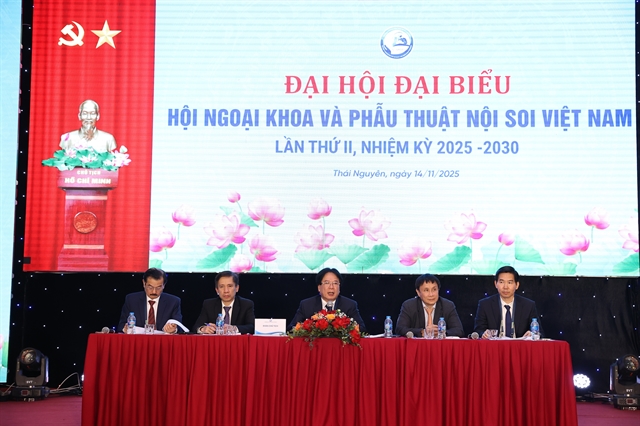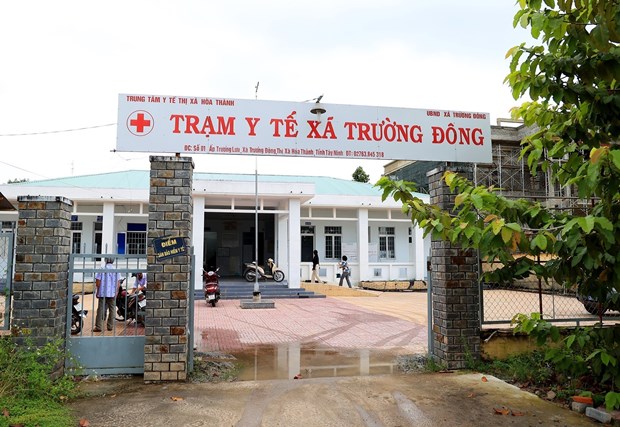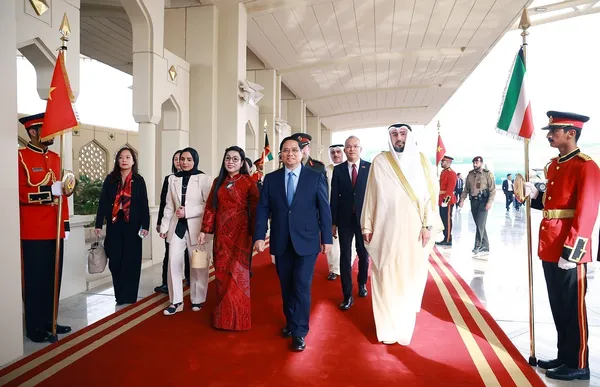 Society
Society


|
| The Hoà Đông Primary School in Tân Biên District’s Hoà Hiệp Commune. — VNA/VNS Photo Hồng Đạt |
TÂY NINH — The south-eastern province of Tây Ninh has effectively built new-style rural areas to improve the lives of people.
Situated in the southern key economic zone, Tây Ninh began to implement the country’s national programme of building new-style rural areas in 2010 and has achieved significant success, according to its People’s Committee.
Of its 71 communes, 55 have been recognised as new-style rural areas and seven others as advanced new-style rural areas.
For the former designation, a commune must meet the programme’s 19 criteria related to infrastructure, irrigation, electricity, environment, income, education, healthcare, social security, and culture.
For the latter, it must meet all criteria and have higher standards across all 19, and have a per capita income of VNĐ58 million (US$2,300).
Under the programme, the province built more than 2,200 km of rural roads, invested hundreds of billions of đồng to build electricity supply systems and installed more than 8,000 street lamps as of 2020.
The public donated more than 122,000 sq.m of land and 110,000 man-days for building rural roads.
All communes meet the requirements of providing primary education for all people and have nursery schools for all five-year-olds.
Trường Đông in Hoà Thành Town was the first to be recognised as an advanced new-style rural commune in 2020.
Huỳnh Thiện Huấn, chairman of its People’s Committee, said the commune has upgraded existing rural roads and infrastructure works for agriculture and rural development, and built new ones, he said.
It has effectively used capital mobilised from various sources, including donations from companies and individuals to upgrade existing roads, he said.
All its commune roads are paved with cement or asphalt and all hamlet- and village-level roads have been upgraded, he said.
In the border commune of Phước Bình in Trảng Bàng Town, authorities have developed transport and irrigation infrastructure to facilitate travel and agriculture production.
Phan Thiện Khâm, chairman of the Phước Bình Farmers Association, said the commune has established agricultural service co-operatives to grow rice, pineapple and vegetables and improve the value of agricultural products.
“The commune has no poor household,” he said
The average annual income in the commune is more than VNĐ60 million ($2,400), he added.

|
| The Trường Đông Commune health centre in Hoà Thành Town. — VNA/VNS Photo Hồng Đạt |
Nguyễn Văn Sáu, who farms pineapple and fish on his 60ha field in Phước Bình’s Bình Hoà Hamlet, said there used to be no roads leading to his field, and so transportation of inputs and agricultural products was difficult.
“All hamlet and commune roads are now cemented or asphalted, and this facilitates agriculture,” he said.
Trần Văn Chiến, deputy chairman of the province People’s Committee, said the province wants all communes to meet advanced new-style criteria by 2030.
It also aims to have advanced and modern agriculture with high efficiency and environment friendliness by 2030, he said.
The life of people in rural areas would be steadily improved and the target is to eliminate poverty by 2050, he added.
Improve income
Nguyễn Thành Tâm, secretary of the province Party Committee and chairman of the People’s Committee, said more than 36,200ha of farmlands that grew rice, rubber and sugarcane with low efficiency have switched to high-value fruits and cassava, which offer higher incomes.
The value of agriculture production reached VNĐ102 million ($4,100) per hectare last year, up VNĐ2 million from 2020, according to the province Department of Agriculture and Rural Development.
Authorities have been developing rural tourism to increase local incomes, and are implementing seven tourism services models in 2021-25.
They include community-based tourism in Dương Minh Châu District; tourism based on fruit orchards, natural landscapes and speciality products in Gò Dầu District; eco-tourism in the Đồng Rùm Historic Relic Zone in Tân Châu District; Bà Đen soursop ecotourism zone in Tây Ninh City; farm tourism along the Vàm Cỏ Đông River in Hoà Thành Town; agricultural tourism in Trảng Bàng Town; agricultural tourism and eco-tourism in the Lò Gò-Xa Mát National Park, and historical tourism in the revolutionary base in Tân Biên District. – VNS




